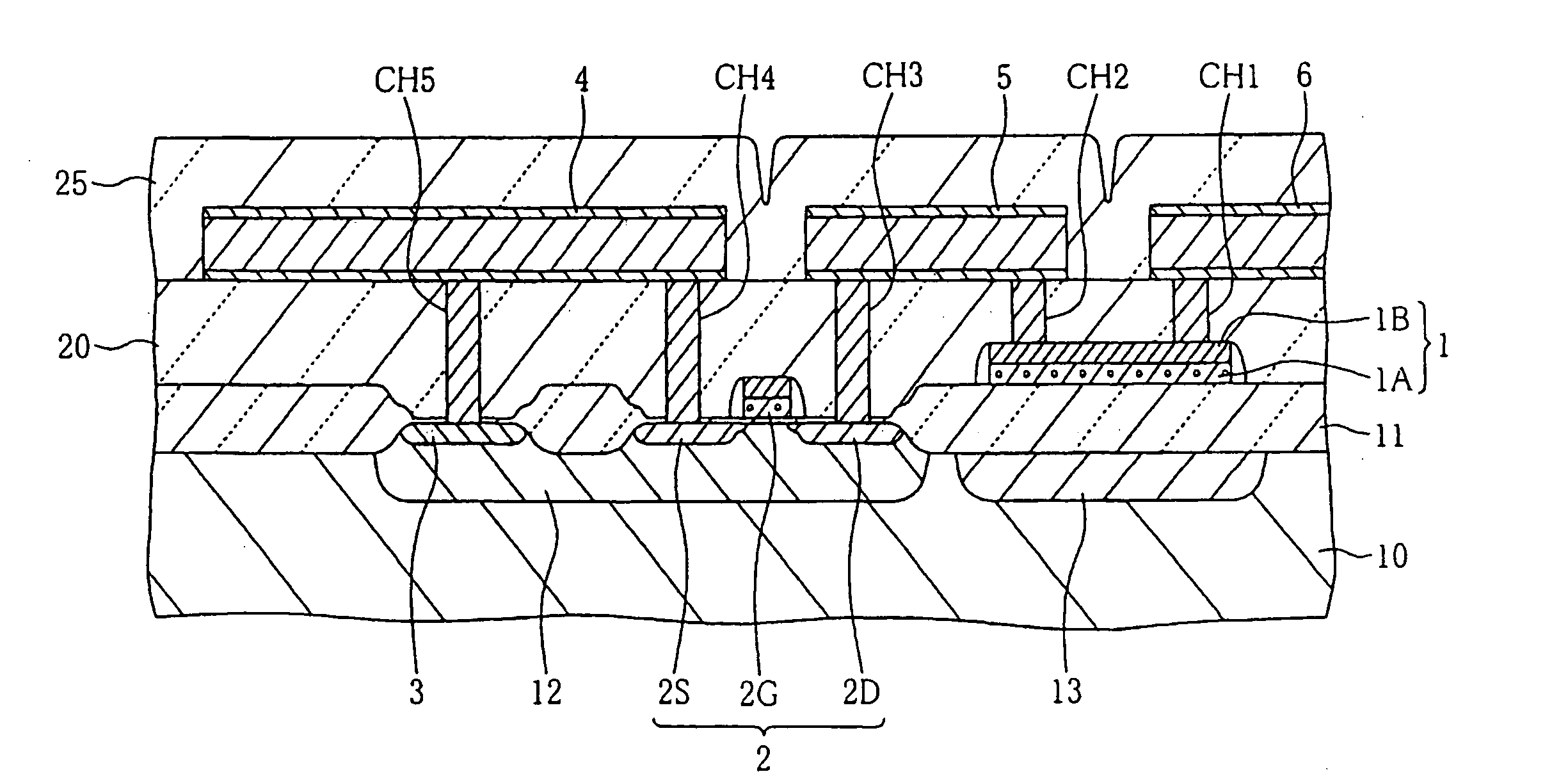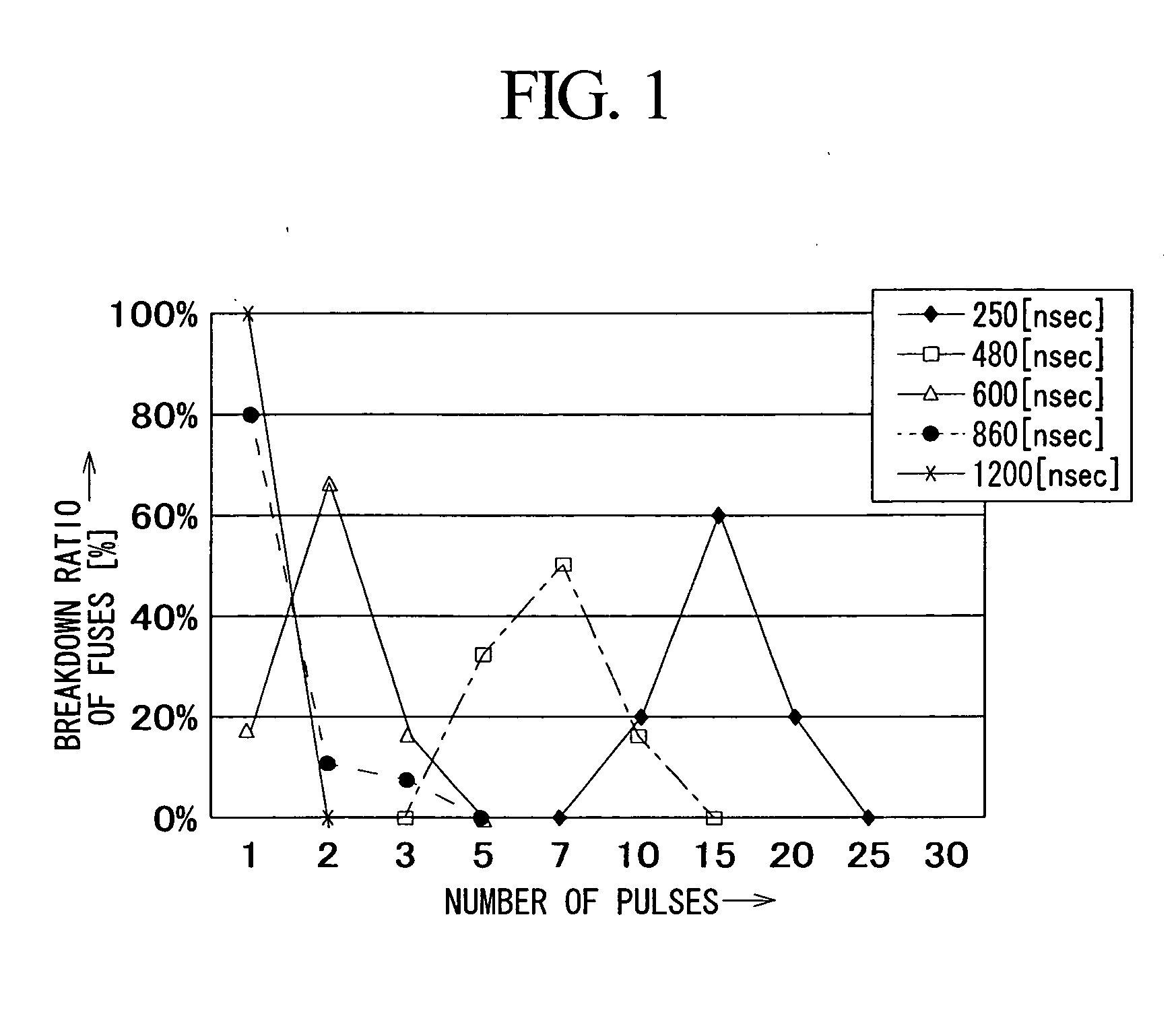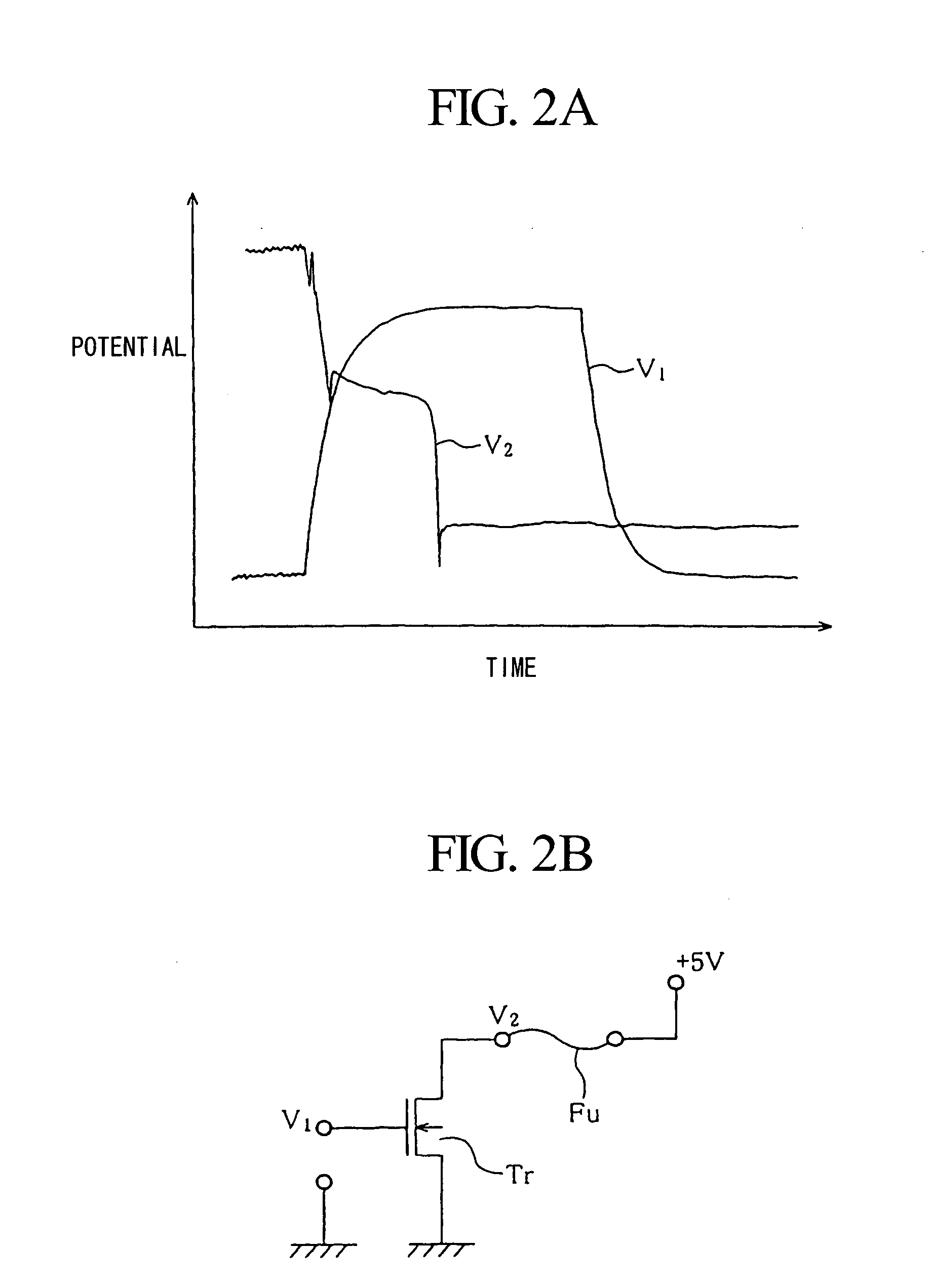Fuse breakdown method adapted to semiconductor device
a technology of fuse breakdown and semiconductor device, applied in the direction of semiconductor device, semiconductor/solid-state device details, electrical apparatus, etc., can solve the problems of large gate width, large overall size, and difficulty in stopping the application of electric energy instantaneously when each fuse breaks down, etc., to suppress degasification, increase distance, and prevent high heat
- Summary
- Abstract
- Description
- Claims
- Application Information
AI Technical Summary
Benefits of technology
Problems solved by technology
Method used
Image
Examples
first embodiment
1. First Embodiment
[0120] First, the basic principle regarding fuse breakdown will be described. A single pulse having high energy is necessary to cause fuse breakdown. Specifically, multiple pulses each having relatively low energy are repeatedly applied to fuses so as to cause thermal stress, by which fuses break down in accordance with the migration phenomenon of fuse materials.
[0121] Suppose that a breakdown threshold Eth is defined to represent energy per one pulse, which sufficiently causes fuse breakdown. It is required that when multiple pulses are used to cause fuse breakdown, their total energy Etotal be higher than the breakdown threshold Eth. For example, when fuse breakdown occurs with a single pulse having energy of 5×107 [J], it is necessary to apply two pulses each having energy of 2.5×107 [J]. In order to cause fuse breakdown with n pulses (where n is an integer not less than “2”), each pulse has energy of 5×107 / n [J].
[0122] All the pulses do not necessarily have ...
second embodiment
2. Second Embodiment
[0209] Similar to the first embodiment, the second embodiment is designed based on the principle in which each fuse breaks down with multiple pulses each having relatively low power.
[0210] The total energy E′ of pulses applied to a fuse must be equal to or greater than the minimum energy E sufficient to cause breakdown with a single pulse; hence, E′≧E. Suppose that fuse breakdown occurs with a single pulse having breakdown energy of E=5.0E−7 [J]. If fuse breakdown occurs with two electric pulses, the total energy, i.e., E′(1+2), is equal to or higher than E; hence, E′(1+2)≧5.0E−7 [J].
[0211] If the breakdown energy E is uniformly divided by “2” to produce two pulses, each pulse has energy E / 2 that is equal to or higher than 2.5E−7 [J]. That is, each pulse requires a half the breakdown energy. It is not necessarily required that first-pulse energy E′(1) be equal to second-pulse energy E′(2); that is, one of them can be set to be higher than the other; hence, E≧E′...
example b
(2) EXAMPLE B
[0240] The aforementioned results may indicate that the method (C), in which the current or voltage is divided by “n”, works well with regard to fuse breakdown. As described above, the energy of a pulse applied to a fuse is reduced by dividing the overall time length, and it is also reduced by dividing the current or voltage.
[0241] The minimum required energy reliably causing breakdown is set to E(1200). This may indicate that each pulse having the energy E(480) may have 1 / 2.5 of the energy E(1200) to be applied to each fuse. The experimental results of FIG. 1 show that each pulse of energy E(480) actually has 1 / 7 of the energy E(1200) because it is weakened due to a decrease of current or voltage; hence, each fuse completely breaks down with multiple pulses each having low energy. Similarly, it is calculated that each pulse having the energy E(250) may have 1 / 4.8 of the energy E(1200); in actuality, however, each pulse of energy E(250) has 1 / 15 of the energy E(1200) b...
PUM
 Login to View More
Login to View More Abstract
Description
Claims
Application Information
 Login to View More
Login to View More - R&D
- Intellectual Property
- Life Sciences
- Materials
- Tech Scout
- Unparalleled Data Quality
- Higher Quality Content
- 60% Fewer Hallucinations
Browse by: Latest US Patents, China's latest patents, Technical Efficacy Thesaurus, Application Domain, Technology Topic, Popular Technical Reports.
© 2025 PatSnap. All rights reserved.Legal|Privacy policy|Modern Slavery Act Transparency Statement|Sitemap|About US| Contact US: help@patsnap.com



